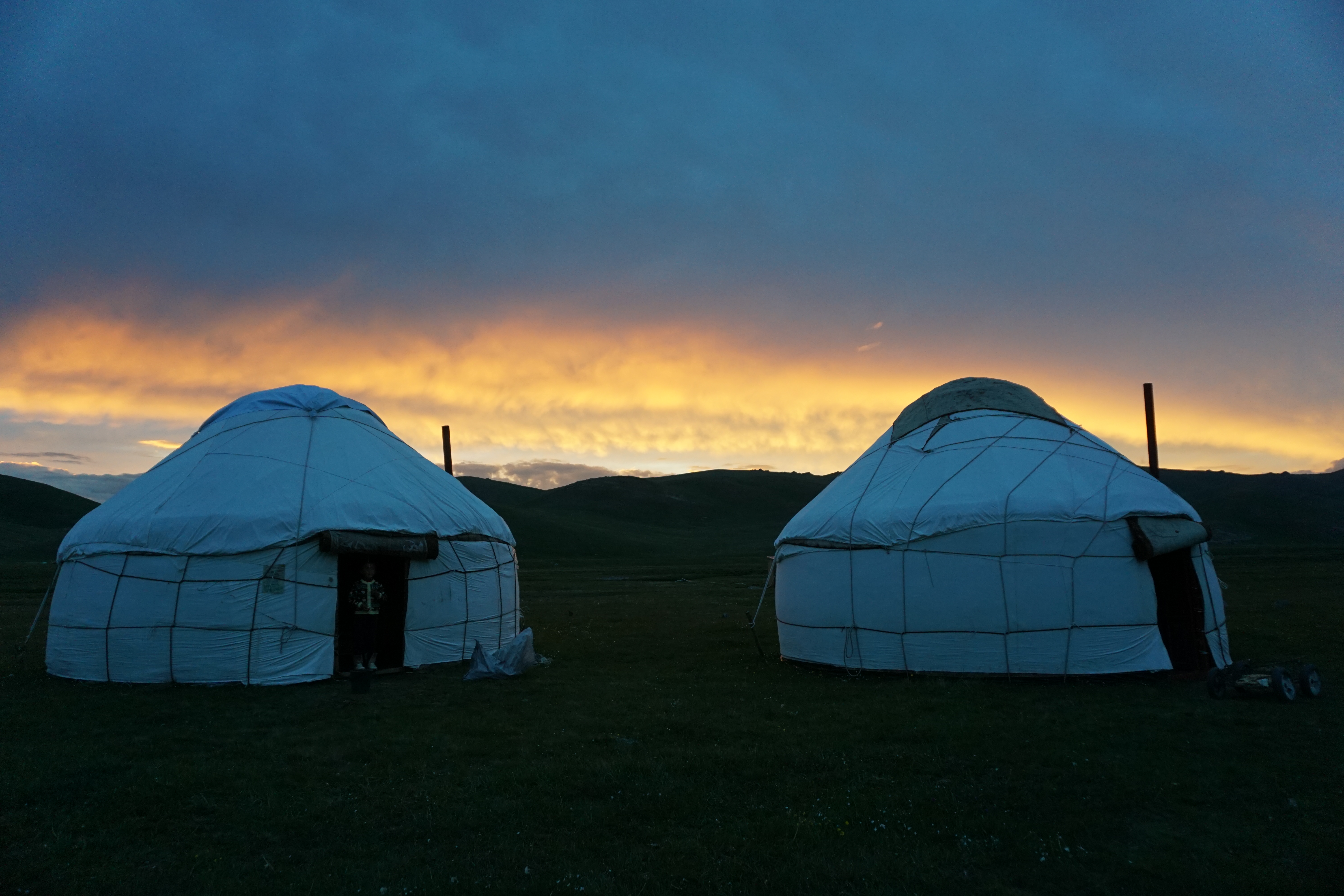Western Tien-Shan Kyrgyzstan

The majestic mountains of Western Tien-Shan soar towards the heavens, peaks as high as 4500 metres breaking through the clouds. As one of the largest mountain ranges in the world, the sheer scale of the dramatic landscapes may be the first thing that awes visitors. Ultimately, though, it's the incredible range of breathtaking environments that is the most interesting aspect of the region.

From the mountains with their summits covered in snow, to the alpine lakes that shine bright in the sun, there is a natural tapestry of peaks, valleys, and plateaus. The ecosystems range from coniferous forests to deciduous woodlands, with a wealth of endemic plant species found within them.
Within the diverse landscapes is a rich biodiversity, with 61 species of mammals, 316 species of birds, 17 species of reptiles, 3 species of amphibians, and over 20 fish species calling this area home. Among these, several species are globally threatened, underscoring the importance of the region for conservation efforts.

The Western Tien-Shan World Heritage Property includes components in Kazakhstan, Uzbekistan, and Kyrgyzstan. Within Kyrgyzstan, there are three main components: Sary-Chelek State Biosphere Nature Reserve, Besh-Aral State Nature Reserve and, the smallest of the three, Padysha-Ata State Nature Reserve. Each of these offers unique features and demonstrates the fascinating diversity of the mountain range.
Sary-Chelek State Biosphere Nature Reserve
In Sary-Chelek State Biosphere Nature Reserve, the most visited of the three parks, there are pristine alpine lakes and lush forests. In the serenity of the woodlands, the elusive Menzbier's Marmot has made its home, along with the rare Bukhara deer and pale-backed pigeon. The reserve also serves as a habitat for other rare and endangered species, including the snow leopard, lynx, brown bear, and golden eagle.
There are lots of activities for visitors to Sary-Chelek, with long hiking trails, paths for horse-riding, wilderness camping, and swimming. The highlight here, though, is Sary-Chelek Lake, considered one of the most beautiful alpine lakes in Central Asia. Surrounded by towering mountains and teeming with diverse aquatic life, local families gather on its tranquil shores or take boat rides across the mirror-like surface.
Besh-Aral State Nature Reserve
For those seeking a more adventurous experience, Besh-Aral State Nature Reserve beckons with its rugged landscapes and untamed wilderness. Its uniquely shaped mountain landscape and high-altitude rivers are some of its attractions, as are the colourful fields that bloom with the endemic Kaufmann's tulips in spring.
The reserve's pristine old-growth forests provide habitat for rare species, including the snow leopard, while its gorgeous alpine meadows are also an important part of the ecology. Hiking through the vast expanses, you may encounter the endangered Great Bustard or witness the graceful flight of the Saker Falcon. It is also worth visiting the reserve's Shandalash area, with its unique geological formations that offer a glimpse into the region's ancient past.
Padysha-Ata State Nature Reserve
The least-explored of Kyrgyzstan's three components, Padysha-Ata State Nature Reserve allows for a more off-the-beaten-track experience. This reserve, with its diverse ecosystems ranging from alpine meadows to rocky slopes, is a haven for plant and animal life that is mostly uninhibited by human intervention. It serves as a habitat for species such as the snow leopard, ibex, and lynx, while visitors should also keep an eye out for the endangered European Marbled Polecat, a true symbol of the region's biodiversity.
Padysha-Ata State Nature Reserve was protected in part because of its large and unique juniper forests, but it also has cultural significance, with a number of holy places, archaeological sites, and ancient petroglyphs within its boundaries.
You'll encounter incredible biodiversity as you explore unmarked natural trails throughout the Western Tien-Shan, which is home to different rare and endangered animal species, including the snow leopard and marbled polecat. Falcons and eagles soar in the sky above while, on the ground, there are hundreds of significant plant species, particularly wild fruits and remarkable nut forests. The vibrant colours of the vegetation complement the mountains and lakes, which can be discovered on hiking trails or horse-riding expeditions. Most of the mountainous region can't be accessed by vehicle, making the Western Tien Shan an exciting off-the-beaten-path destination for intrepid travellers.
How to get there
Sary Chelek Nature Reserve can be reached by public transport. From Osh bus station, buses depart daily. The bus Marszrutka to Sary Chelek will leave you in Arkit village. The first bus departs at 7:40 in the morning and arrives in Arkit around 4 pm. From Bishkek, the capital, the easiest way is to take a taxi to Tashkomur and then take the same Marszrutka bus that will be heading to Arkit.
How to Visit
Arkit is the village closest to Sary Chelek Nature Reserve and it is well prepared to receive tourists. There are different types of accommodations that will suit different tourist needs. There you can find campsites, homestays, restaurants, and shops. For accessing the park, it is recommended to take a car or a preferred transportation method as there are a few kilometres preceding the hiking area. Taking the car there is an extra fee that will be charged at entrance.

At the nearby villages, tour operators offer different tour options, but it is up to the visitor if they would like to go alone or pay for a tour. If you would like to camp inside the natural reserve, it is possible upon the payment of a fee.
When to visit
July to mid-September is the perfect season to go hiking in Kyrgyzstan. Although it is the recommended season, it is also possible to visit during other times of the year. However, especially during the winter months, the temperature can drop quite low, increasing the difficulty of the hikes.





